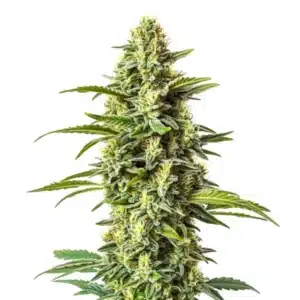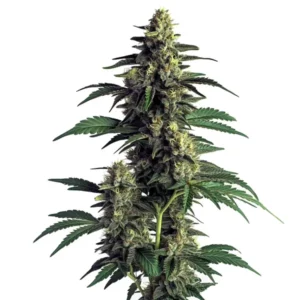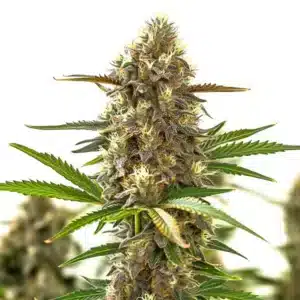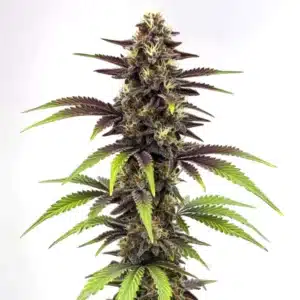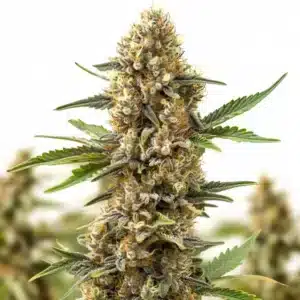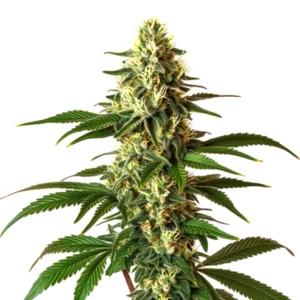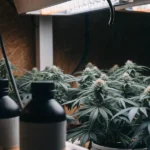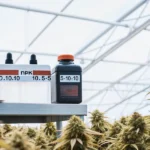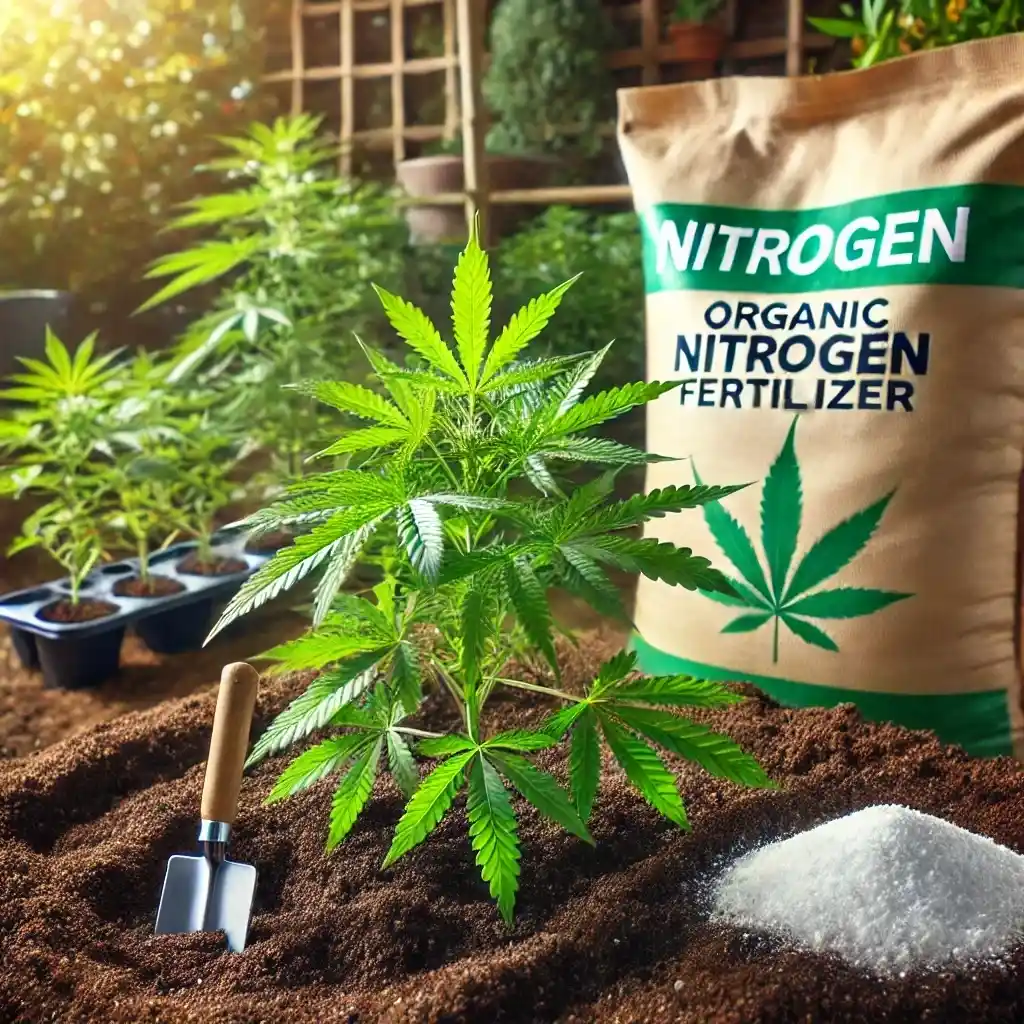
Best Quick Source of Nitrogen for Cannabis: How to Boost Growth Fast
Nitrogen is one of the most important nutrients for cannabis plants, especially during the vegetative stage when the plant is growing leaves and stems. If your cannabis plants are showing signs of nitrogen deficiency, you’ll need the best quick source of nitrogen for cannabis to give them a boost and get them back on track. In this article, we’ll explore how nitrogen impacts cannabis growth, the fastest ways to provide nitrogen to your plants, and tips on when and how to use it effectively.
Why Nitrogen Is Essential for Cannabis Growth
Cannabis plants require a balanced mix of nutrients to thrive, but nitrogen is particularly important during the early stages of growth. Nitrogen promotes healthy leaf and stem development, ensuring your plants can build a strong foundation for later stages of growth.
Recommended Strains
Northern Critical
|
|
THC | 15% - 18% (Medium) |
|
|
Type | Feminized |
|
|
Yield | High |
|
|
Phenotype | 60% Indica / 40% Sativa |
Northern Lights
|
|
THC | 17% (Medium) |
|
|
Type | Feminized |
|
|
Yield | Medium |
|
|
Phenotype | 90% Indica / 10% Sativa |
Nitrogen in Cannabis Plants
It plays an important function in several processes within the cannabis plant. It is essential for the production of chlorophyll, which allows plants to absorb sunlight and convert it into energy through photosynthesis. Without enough nitrogen, your plants will struggle to grow and produce the large, vibrant leaves that are necessary for capturing light.
Nitrogen also helps in the synthesis of amino acids, which are the building blocks of proteins. These proteins are vital for cell structure and overall plant health. For those looking for the best quick source of nitrogen for cannabis, it’s important to understand how nitrogen fuels these critical processes.
Signs Your Cannabis Plant Needs Nitrogen
If your cannabis plants are lacking nitrogen, they’ll show clear signs of deficiency. The most common symptom is yellowing leaves, starting with the older, lower leaves. This is because the plant redirects its remaining nitrogen to new growth, leaving the older leaves to suffer. Stunted growth, weak stems, and reduced vigor are other indicators that your plants need nitrogen.
Knowing these signs is key to preventing long-term damage. When you spot them early, you can quickly respond with a nitrogen boost, ensuring your plants recover quickly. If you’re searching for the best quick source of nitrogen for cannabis, this knowledge will guide your decision-making.
Promos & Deals
Best Quick Sources of Nitrogen for Cannabis
When your plants are in urgent need of nitrogen, the best option is to choose a source that delivers fast-acting results. Let’s explore some of the most effective quick sources of nitrogen you can use to revive your cannabis plants.
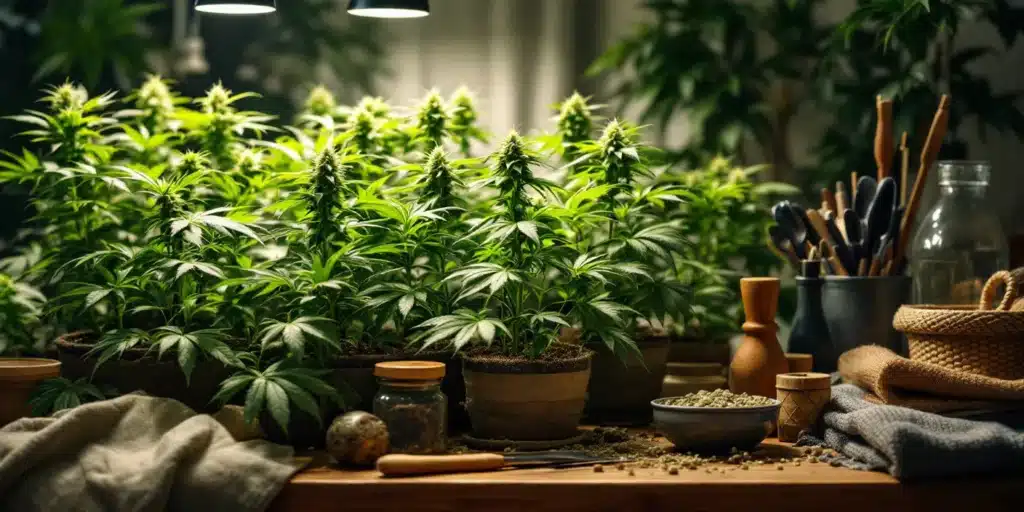
Using Blood Meal for Rapid Nitrogen Boost
Blood meal is one of the fastest ways to deliver nitrogen to your cannabis plants. It’s a natural fertilizer made from dried animal blood, typically from cattle or poultry. Blood meal is rich in nitrogen and can quickly address any deficiencies in your soil. When applied, it breaks down quickly, releasing nitrogen into the soil where the plant roots can absorb it.
For cannabis growers looking for the best quick source of nitrogen for cannabis, blood meal is an excellent choice. It not only supplies nitrogen but also enriches the soil with organic matter, improving its structure and water retention.
Fish Emulsion as an Effective Nitrogen Source
Another great option for fast nitrogen is fish emulsion. This liquid fertilizer is made from the byproducts of the fish industry and contains a high concentration of nitrogen, along with other nutrients that benefit your plants. Fish emulsion is water-soluble, which means it can be absorbed by your plants almost immediately after application.
To use fish emulsion, simply dilute it in water according to the product’s instructions and water your plants with it. You’ll see results within a few days, as your plants start to regain their green color and energy. This makes fish emulsion one of the best quick sources of nitrogen for cannabis, especially for those seeking an organic solution.
Synthetic Nitrogen Fertilizers for Fast Results
If you’re looking for something even faster, synthetic nitrogen fertilizers are your go-to option. These fertilizers are specially formulated to deliver nitrogen directly to your plants in a form that’s immediately available. Products like ammonium nitrate or urea are common choices for synthetic nitrogen fertilizers.
While synthetic fertilizers provide rapid results, they should be used carefully. Overapplication can lead to nutrient burn, which will harm your plants rather than help them. If you’re considering synthetic options as the best quick source of nitrogen for cannabis, be sure to follow the recommended dosage closely.
Organic vs. Synthetic Nitrogen: Which Is Better?
When it comes to choosing between organic and synthetic nitrogen sources, both options have their advantages and disadvantages. Your decision will depend on your growing environment and the specific needs of your cannabis plants.
Benefits of Organic Nitrogen Sources
Organic nitrogen sources, such as blood meal or fish emulsion, provide a slow but steady release of nutrients. This means that your plants will have access to nitrogen over a longer period of time, reducing the risk of nutrient burn or overdose. Organic fertilizers also improve soil health by adding organic matter, which supports beneficial microbes and enhances overall plant growth.
Additionally, organic nitrogen sources are ideal for those growing cannabis in an eco-friendly way. If you prefer to keep your grow as natural as possible, using organic options as the best quick source of nitrogen for cannabis is the way to go.
When to Use Synthetic Nitrogen for Cannabis
On the other hand, synthetic nitrogen fertilizers are best used when your plants need an immediate boost. They’re designed for fast absorption, making them a great choice for growers dealing with severe nitrogen deficiencies. However, synthetic fertilizers don’t improve soil quality in the same way organic fertilizers do. In fact, over time, they can cause nutrient imbalances in the soil if not managed properly.
If you’re in a situation where your plants need a rapid fix and you’re experienced with fertilizer management, synthetic options may be the best quick source of nitrogen for cannabis for your grow. Just be sure to monitor your plants closely and adjust your feeding schedule as needed.
How to Apply Nitrogen for Immediate Results
Once you’ve identified the best quick source of nitrogen for cannabis, the next step is knowing how to apply it effectively. Whether you’re using organic or synthetic nitrogen, proper application ensures your plants get the nutrients they need without the risk of over-fertilization.
Foliar Feeding for Quick Nitrogen Absorption
One of the fastest ways to deliver nitrogen directly to your cannabis plants is through foliar feeding. This technique involves spraying a nutrient solution onto the leaves, where the plant absorbs the nutrients through tiny pores called stomata. Since the nutrients bypass the roots and go straight into the plant’s tissues, foliar feeding provides a rapid boost of nitrogen.
To foliar feed, dilute your nitrogen fertilizer (such as fish emulsion or a synthetic fertilizer) in water, and use a spray bottle to mist the leaves. Be sure to apply the solution during the early morning or late evening, when the stomata are most open. This method is especially useful for quickly correcting nitrogen deficiencies and can show results within just a few days.
For growers seeking the best quick source of nitrogen for cannabis, foliar feeding is an excellent option for immediate absorption and rapid recovery.
Best Practices for Applying Nitrogen Fertilizers
When applying nitrogen fertilizers to your cannabis plants, there are a few best practices to follow to avoid problems like nutrient burn or over-fertilization. Start by using the recommended dosage on the fertilizer packaging, less is more when it comes to nitrogen. Overfeeding can lead to excess nitrogen in the soil, which can cause dark green leaves, weak stems, and delayed flowering.
Additionally, it’s important to water your plants thoroughly after applying fertilizer to ensure even distribution of nutrients. If you’re using synthetic fertilizers, follow a strict feeding schedule to avoid nutrient buildup in the soil.
For those using organic nitrogen sources, you’ll want to apply them slightly ahead of time, as they take longer to break down and release nitrogen. But if you’ve chosen a fast-acting organic option like blood meal or fish emulsion, you’ll still see results quickly, making these among the best quick sources of nitrogen for cannabis.
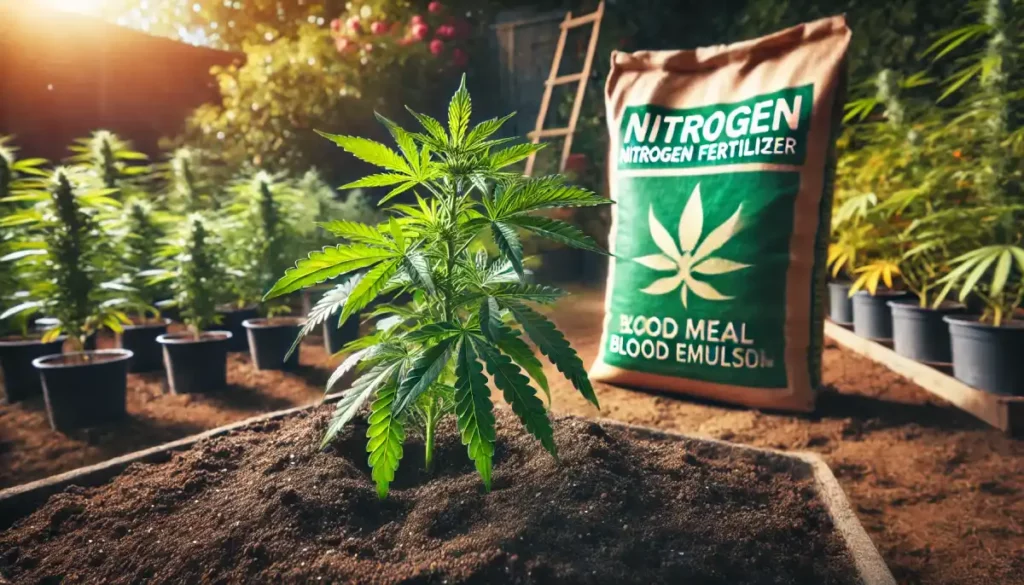
Preventing Nitrogen Deficiency in Cannabis
Nitrogen deficiencies can significantly affect the health and yield of your cannabis plants, but with the right strategies in place, they can be prevented. By maintaining a consistent feeding schedule and monitoring your plants for early signs of deficiency, you can keep nitrogen levels in check and ensure optimal growth.
Maintaining Optimal Nitrogen Levels Throughout the Growth Cycle
Cannabis plants require varying levels of nitrogen depending on their stage of growth. During the vegetative stage, your plants need a higher nitrogen content to support the rapid development of leaves and stems. However, as your plants transition into the flowering stage, their nitrogen requirements decrease, and they need more phosphorus and potassium to support bud development.
To prevent nitrogen deficiencies, adjust your feeding schedule to match your plant’s growth stage. During the vegetative stage, use a balanced fertilizer with a higher nitrogen content, and switch to a bloom fertilizer with less nitrogen once your plants start flowering. This way, you can maintain optimal nitrogen levels throughout the growth cycle, ensuring your plants have the nutrients they need when they need them most.
Knowing the best quick source of nitrogen for cannabis is important for responding to sudden deficiencies, but maintaining a balanced feeding regimen helps prevent issues from arising in the first place.
Monitoring and Adjusting Nitrogen Levels in Different Growth Stages
Regular monitoring is essential for keeping your plants healthy. Nitrogen deficiencies often start with subtle signs, such as light green leaves or slow growth. By catching these early, you can adjust your feeding routine before the deficiency becomes severe.
During the vegetative stage, monitor your plants’ leaf color and overall growth. If you notice yellowing leaves or a lack of vigor, it may be time to apply a quick source of nitrogen. Similarly, as your plants move into the flowering stage, monitor for signs of excess nitrogen, such as overly dark green leaves or weak, leggy growth. Reducing nitrogen during this stage will ensure that your plants focus their energy on producing high-quality buds rather than excessive leaf growth.
When you know how to monitor and adjust nitrogen levels, you can prevent both deficiencies and excesses, leading to healthier plants and better yields.
Addressing Nitrogen Toxicity in Cannabis
While nitrogen is vital for the healthy growth of cannabis plants, too much of it can cause significant problems. Over-fertilizing with nitrogen can lead to nitrogen toxicity, a condition that negatively impacts the plant’s growth and yield. Knowing how to avoid and address nitrogen toxicity is essential when using the best quick source of nitrogen for cannabis.
Signs of Nitrogen Toxicity
Nitrogen toxicity occurs when plants are exposed to excessive levels of nitrogen, particularly during the flowering stage when they need less of this nutrient. The most common signs of nitrogen toxicity include dark green leaves, clawing (when the tips of the leaves curl downward), and weak stems that struggle to support the plant.
Other symptoms of nitrogen toxicity include slow growth and reduced bud production. During the flowering stage, nitrogen toxicity can cause the plant to focus on vegetative growth (leaves and stems) rather than developing buds. This results in smaller, less potent flowers, which directly affects your harvest quality.
If you recognize these symptoms in your cannabis plants, it’s important to act quickly to prevent further damage.
How to Fix Nitrogen Toxicity
The first step in addressing nitrogen toxicity is to stop feeding your plants nitrogen-rich fertilizers. If you’ve been using synthetic fertilizers, flush your growing medium with pH-balanced water to wash away excess nutrients. This will help clear the soil of any buildup that may be causing toxicity. For organic growers, switching to a fertilizer with lower nitrogen levels can help balance nutrient intake.
Additionally, prune any damaged leaves to encourage the plant to focus its energy on new growth. By adjusting your feeding regimen and flushing the soil when necessary, you can reverse the effects of nitrogen toxicity and get your plants back on track.
For growers using the best quick source of nitrogen for cannabis, it’s essential to monitor your plants regularly and ensure that they’re getting the right amount of nitrogen, not too much and not too little.
Combining Nitrogen with Other Essential Nutrients
While nitrogen is a critical nutrient for cannabis, it’s important to remember that your plants also require a balance of other macronutrients and micronutrients to thrive. These nutrients include phosphorus, potassium, calcium, magnesium, and sulfur. When combined properly, they work together to support healthy plant growth and maximize your harvest.
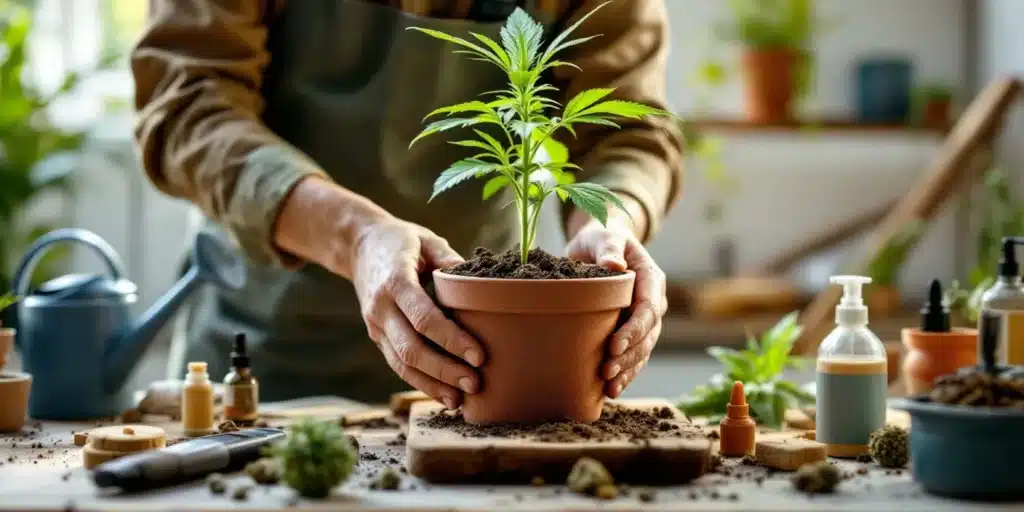
Balancing Nitrogen with Phosphorus and Potassium
Phosphorus and potassium are two key nutrients that complement nitrogen in supporting cannabis growth. While nitrogen promotes vegetative growth, phosphorus is essential for root development and bud formation. Potassium, on the other hand, helps with water regulation, enzyme activation, and overall plant health.
During the vegetative stage, a nutrient ratio higher in nitrogen is ideal. However, once your plants enter the flowering stage, you’ll need to reduce nitrogen levels and increase phosphorus and potassium to support bud development.
Balancing these nutrients properly ensures that your plants grow strong, healthy, and capable of producing large, potent buds. Even if you’ve identified the best quick source of nitrogen for cannabis, make sure to adjust other nutrients accordingly to maintain optimal plant health.
Micronutrients for Cannabis Growth
In addition to nitrogen, phosphorus, and potassium, cannabis plants also require smaller amounts of micronutrients like calcium, magnesium, and sulfur. These elements help with various functions, including cell wall structure, chlorophyll production, and enzyme activation. Without these micronutrients, your plants may experience growth issues, even if their nitrogen levels are sufficient.
If you’re using synthetic fertilizers, many come with a balanced blend of macronutrients and micronutrients. For organic growers, you can supplement your plants with additional micronutrients using natural sources like dolomite lime for calcium and Epsom salts for magnesium. Ensuring your plants have access to these nutrients will help them thrive throughout the growing cycle.
Best Quick Nitrogen Sources for Different Growing Mediums
Whether you’re growing cannabis in soil, coco coir, or hydroponics, the way you deliver nitrogen to your plants will vary depending on the medium. Knowing how different growing environments affect nutrient absorption can help you choose the best quick source of nitrogen for cannabis and ensure optimal results.
Nitrogen in Soil-Based Grows
Soil is the most traditional growing medium for cannabis, and it’s generally very forgiving when it comes to nutrient management. Organic fertilizers like blood meal and fish emulsion are excellent options for soil grows, as they release nitrogen slowly over time while also improving soil quality.
If you notice nitrogen deficiencies in your soil-based grow, applying these organic sources as a top dressing or mixing them into the soil can provide a quick fix. Soil retains nutrients well, so the nitrogen from these sources will be available to your plants over a longer period, reducing the need for frequent feedings.
However, if you’re looking for immediate results, using a water-soluble nitrogen fertilizer during watering can give your plants a quick boost. Just be cautious of over-fertilizing, as soil tends to hold onto nutrients, which can lead to a buildup over time.
Nitrogen in Coco Coir Grows
Coco coir is a popular soilless medium for cannabis cultivation due to its excellent water retention and aeration properties. However, coco coir doesn’t contain any nutrients on its own, which means you’ll need to supplement your plants with nitrogen-rich fertilizers regularly.
In coco coir grows, nitrogen deficiencies can occur more quickly than in soil, making it important to provide a steady supply of nitrogen throughout the vegetative stage. Water-soluble fertilizers and liquid organic fertilizers like fish emulsion work well in coco coir, as they can be absorbed quickly by the plants.
For those using coco coir, the best quick source of nitrogen for cannabis is one that can be delivered through regular watering, ensuring your plants receive a consistent supply of this essential nutrient.
Nitrogen in Hydroponic Grows
In hydroponic systems, all nutrients are delivered directly to the plant’s roots through a water-based solution. This allows for precise control over nutrient levels, making it easier to correct deficiencies quickly. If your hydroponic cannabis plants need nitrogen, you can add a nitrogen-rich solution directly to the reservoir, where it will be absorbed almost immediately.
Synthetic nitrogen fertilizers work particularly well in hydroponics, as they dissolve easily in water and are readily available to the plants. If you notice a nitrogen deficiency, adjusting the nutrient solution in your hydroponic system can provide an instant fix.
For hydroponic growers, the best quick source of nitrogen for cannabis is a water-soluble fertilizer that can be added directly to the nutrient solution for rapid results.


